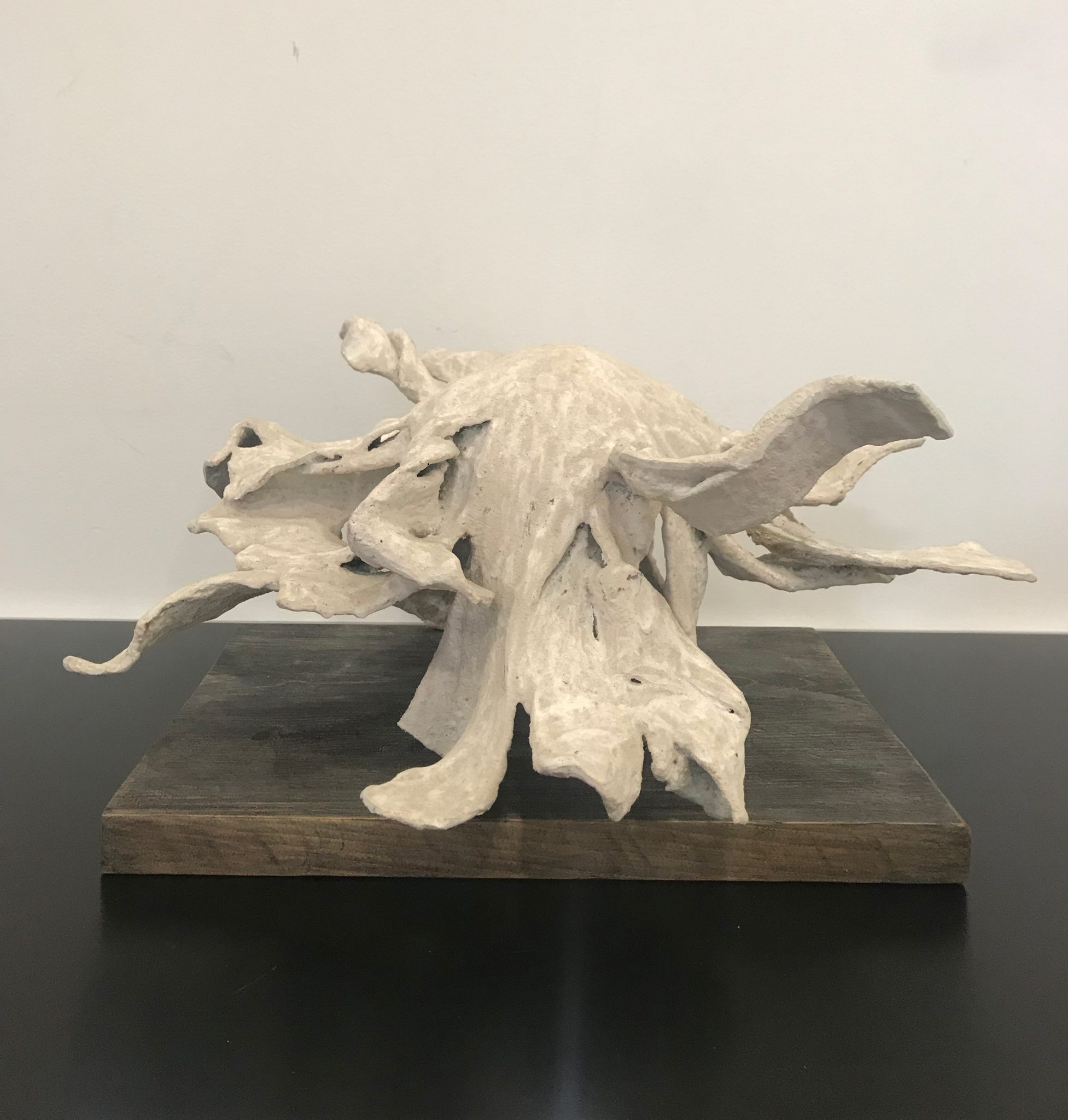My process has always been about seeing and feeling with the body, not so much about analysis. I think of my pieces as bodies, the depiction of living organisms with very little narrative. The reductive pieces rest with soft breath while the more complex pieces evolve with growth, light and movement, all emanating from the core. The only way I know how to do this is to engage my whole body in the work. – Mia Westerlund Roosen
Mia Westerlund Roosen entered the art world in the early 1960s at a time when Minimalism’s cool, geometric forms dominated. Her artistic language, however, leaned towards a more organic, handmade look centered on her experience of the human body, an approach that was more aligned with what would become post-Minimalism. At one point in her youth, Westerlund Roosen considered a career in dance, and she cites this interest as a reason her works so often reference the human body, seen here in Dervish (Maquette). Strips of felt covered in resin flap and spin away from the center, conjuring the energy of a hypnotic, spiritual dance. It is a testament to the artist’s distilled, nuanced approach that the piece conveys the dynamism and emotion of the body’s twirling vitality without directly depicting the figure. Westerlund Roosen has received several prestigious awards, including a grant from the National Endowment for the Arts, a John Simon Guggenheim Memorial Foundation Fellowship, and a Fulbright Fellowship. Her work can be found in numerous public collections, including the Metropolitan Museum, New York; the Guggenheim Museum, New York; and the Storm King Art Center, Mountainville, where her work is permanently installed.
